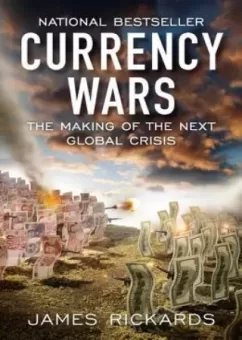Chapter 4
58 As inflation slowly began to take off in late 1921 . . . This account of the Weimar hyperinflation of 1921–1923 and its impact on the German people draws upon Adam Fergusson, When Money Dies: The Nightmare of Deficit Spending, Devaluation, and Hyperinflation in Weimar Germany, New York: Public Affairs, 2010.
61 At exactly the same time the Weimar hyperinflation was spiraling out of control . . . The accounts of the interwar beggar-thy-neighbor devaluations and international financial conferences intended to mitigate their effects draws upon Liaquat Ahamed, Lords of Finance: The Bankers Who Broke the World, New York: Penguin Press, 2009.
65 Separately, the United States, after cutting interest rates in 1927 . . . For accounts of U.S. monetary policy in the years prior to the Great Depression and the conclusion that Federal Reserve monetary policy was unduly restrictive, see Milton Friedman and Anna Jacobson Schwartz, A Monetary History of the United States, 1867–1960, Princeton: Princeton University Press, 1963.
68 However, Roosevelt would not be sworn in as president until March 1933. . . For an account of the early years of the Franklin D. Roosevelt administration and his actions with respect to the banking system and gold, see Allan H. Meltzer, A History of the Federal Reserve, Volume 1: 1913– 1951, Chicago: University of Chicago Press, 2003.
71 “I, Franklin D. Roosevelt . . . declare that . . .” Executive Order 6102, April 5, 1933, www.presidency.ucsb.edu/ws/index.php? pid=14611&st=&st1=#axzz1LXd02JEK.
Pages: 1 2 3 4 5 6 7 8 9 10 11 12 13 14 15 16 17 18 19 20 21 22 23 24 25 26 27 28 29 30 31 32 33 34 35 36 37 38 39 40 41 42 43 44 45 46




